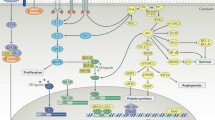Abstract
There has always been an intimate and complex relationship between the diagnosis of a disease and its treatment. The approach dubbed theranostics aims to combine diagnostic techniques with therapeutic ones by deploying the same molecule in two roles, exploiting the specificity of its function to render disease treatment more effective. Does this technical development have the potential to change our conception of disease diagnosis? With the treatment approach so intimately linked to the diagnostic tool, might it be possible to treat a disease without having first made an independent clinical or laboratory diagnosis? Here we discuss medical diagnosis, arguing for three categories of diagnosis, before presenting an example of a theranostic approach using radioactive prostate-specific membrane antigen ligands. This example allows us to envision a form of theranostic agent that would be able to diagnose a cancer, for example, and engage directly in its treatment, opening up the possibility of treating patients at risk of developing this cancer without any other clinical diagnostic steps. Would it be a problem if these approaches eventually became independent of any specialist clinical diagnostic supervision? If a theranostic technique is shown to work, following its own logic, do we still need an independent ‘traditional’ diagnosis prior to its use? We argue that such a diagnosis would no longer be necessary provided certain conditions are fulfilled.
Similar content being viewed by others
Notes
There is an area in which diagnosis has attracted more attention, and that is in the philosophy of psychiatry, particularly around the Diagnostic and Statistical Manual of Mental Disorders or DSM (Demazeux and Singy 2015).
For the UK’s National Health Service (NHS) guidelines, see the National Institute for Health Care and Excellence website; https://www.nice.org.uk. The NHS-offers an on-line tool for evaluating your own risk for cardiovascular disease, https://qrisk.org. Although it proposes taking action starting from a 20% risk level, the NHS seems to be arguing for a reduction of this threshold to 10%.
The pharmaceutical industry operates with risk/benefit models, as do most modern healthcare providers. These models are not, however, the same because private for-profit companies factor in different financial considerations from those used by other actors in the healthcare system. While it is not in the interest of a pharmaceutical laboratory to cause patients any harm, they do need to make a profit themselves in order to survive if not thrive.
References
Conrad, Peter. 2007. The medicalization of society: On the transformation of human conditions into treatable disorders. Baltimore: Johns Hopkins University Press.
Demazeux, Steeves, and Patrick Singy, eds. 2015. The DSM-5 in perspective: Philosophical reflections on the psychiatric babel. Dordrecht: Springer.
Ding, Chizhu, and Zibiao Li. 2017. A review of drug release mechanisms from nanocarrier systems. Materials Science & Engineering C: Materials for Biological Applications 76: 1440–1453. https://doi.org/10.1016/j.msec.2017.03.130.
Eiber, Matthias, and Ken Herrmann. 2017. From NETTER to PETTER: PSMA targeted radioligand therapy. Journal of nuclear medicine 58 (1): 9–10. https://doi.org/10.2967/jnumed.116.184994.
Goldstein Jutel, Annemarie. 2011. Putting a name to it: Diagnosis in contemporary society. Baltimore: The Johns Hopkins University Press.
Greene, Jeremy. 2008. Prescribing by numbers, drugs and the definition of disease. Baltimore: Johns Hopkins University Press.
Herrmann, Ken, Steven M. Larson, and Wolfgang A. Weber. 2017. Theranostic concepts: More than just a fashion trend—Introduction and overview. Journal of Nuclear Medicine 58 (Supplement 2): 1S-2S.
Hofman, Michael S., and Amir Iravani. 2017. Gallium-68 prostate-specific membrane antigen PET imaging. PET Clinics 12 (2): 219–234. https://doi.org/10.1016/j.cpet.2016.12.004.
Keinänen, Outi, James M. Brennan, Rosemery Membreno, Kimberly Fung, Kishore Gangangari, Eric J. Dayts, Carter J. Williams, and Brian M. Zeglis. 2019. Dual radionuclide theranostic pretargeting. Molecular Pharmaceutics 16 (10): 4416–4421. https://doi.org/10.1021/acs.molpharmaceut.9b00746.
Limbaugh, David, David Kasmier, Werner Ceusters, and Barry Smith. 2019. Warranted diagnosis. In Proceedings of the international conference on biomedical ontology (pp. 1–10). Buffalo, NY.
Muthu, Madaswamy S., David Tai Leong, Lin Mei, and Si-Shen. Feng. 2014. Nanotheranostics—Application and further development of nanomedicine strategies for advanced theranostics. Theranostics 4 (6): 660–677. https://doi.org/10.7150/thno.8698.
Pauwels, Elin, Frederik Cleeren, Guy Bormans, and Christopher M. Deroose. 2018. Somatostatin receptor PET ligands—The next generation for clinical practice. American Journal of Nuclear Medicine and Molecular Imaging 8 (5): 311–331.
Rahbar, Kambiz, Ali Afshar-Oromieh, Hossein Jadvar, and Hojjat Ahmadzadehfar. 2018. PSMA theranostics: Current status and future directions. Molecular Imaging 17: 1–9. https://doi.org/10.1177/1536012118776068.
Taylor, Fiona, Mark D. Huffman, Ana Filipa Macedo, Theresa HM. Moore, Margaret Burke, George Davey Smith, Kirsten Ward, and Shah Ebrahim. 2013. Statins for the primary prevention of cardiovascular disease. Cochrane Database of Systematic Reviews. https://doi.org/10.1002/14651858.CD004816.pub5.
Wiesing, Urban. 2019. Theranostics: Is it really a revolution? Evaluating a new term in medicine. Medicine Health Care and Philosophy 22: 593–597.
Yadav, MadhavPrasad, Sanjana Ballal, Chandrashekhar Bal, Ranjit Kumar Sahoo, Nishikant Avinash Damle, Madhavi Tripathi, and Amlesh Seth. 2020. Efficacy and safety of 177Lu-PSMA-617 radioligand therapy in metastatic castration-resistant prostate cancer patients. Clinical Nuclear Medicine 45 (1): 19–31. https://doi.org/10.1097/RLU.0000000000002833.
Zheng, Xiu-Chai., Wei Ren, Shuang Zhang, Ting Zhong, Xiao-Chuan. Duan, Yi-Fan. Yin, Xu. Mei-Qi, Yan-Li. Hao, Zhan-Tao. Li, Hui Li, Man Liu, Zhuo-Yue. Li, and Xuan Zhang. 2018. The theranostic efficiency of tumor-specific, pH-responsive, peptide-modified, liposome-containing paclitaxel and superparamagnetic iron oxide nanoparticle. International Journal of Nanomedicine 13: 1495–1504.
Acknowledgements
The author would like to thank Bertrand Rihn and Halima Alem-Marchand of the Institut Jean Lamour in Nancy for the invaluable technical help that they provided.
Funding
The author received no funding for this research.
Author information
Authors and Affiliations
Contributions
The author is entirely responsible for the contents of this article.
Corresponding author
Ethics declarations
Conflict of interest
The author has no competing interest or potential conflict of interest to declare.
Additional information
Publisher's Note
Springer Nature remains neutral with regard to jurisdictional claims in published maps and institutional affiliations.
Rights and permissions
About this article
Cite this article
Simon, J. Disease diagnosis and treatment; could theranostics change everything?. Med Health Care and Philos 24, 401–408 (2021). https://doi.org/10.1007/s11019-021-10015-6
Accepted:
Published:
Issue Date:
DOI: https://doi.org/10.1007/s11019-021-10015-6




